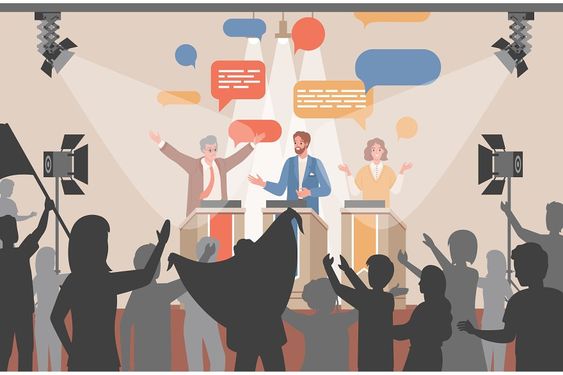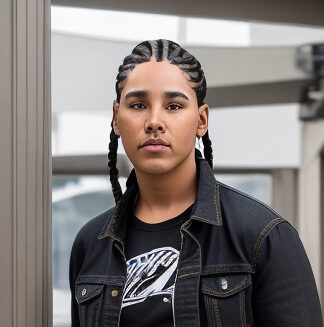
How Art Can Be Political: A Comprehensive Guide
Art has been a powerful form of expression throughout human history, transcending boundaries of language and culture. While art can entertain and inspire, it also possesses a profound ability to convey political messages, challenge societal norms, and provoke thought. The intersection of art and politics is a rich tapestry, woven with threads of dissent, activism, propaganda, and social commentary. In this blog post, we will explore the ways How Art Can Be Political, examining its historical context, its role in contemporary society, and its impact on public discourse.
Historical Context: Art as a Political Tool
Art’s political dimensions can be traced back to ancient civilizations. Throughout history, rulers and governments have used art to legitimize their authority, propagate ideologies, and shape public perception.
- Ancient Civilizations:
- Egyptian Art: The grandeur of ancient Egyptian art, with its colossal statues and intricate hieroglyphics, was a tool for pharaohs to assert divine authority and communicate their power. The depictions of pharaohs in battle or in communion with gods reinforced their status as both political and religious leaders. Don’t Miss to Check Out Our Site: wellnessgenius.xyz
- Greek and Roman Art: In ancient Greece and Rome, art was used to celebrate civic ideals, commemorate military victories, and promote political leaders. The Parthenon sculptures, for example, glorified Athenian democracy and military prowess.
- Renaissance and Baroque Eras:
- Renaissance Art: During the Renaissance, art became a medium for political and religious expression. Artists like Leonardo da Vinci and Michelangelo were commissioned by political and religious leaders to create works that reflected their power and influence.
- Baroque Art: The Baroque era saw the Catholic Church using art to counter the Protestant Reformation. The dramatic and emotive style of Baroque art served as a form of religious propaganda, aiming to evoke awe and reinforce Catholic doctrine.
- 19th and 20th Centuries:
- Romanticism and Realism: The Romantic and Realist movements emerged as responses to the political and social upheavals of the 19th century. Artists like Eugène Delacroix and Gustave Courbet used their work to critique political systems, champion social justice, and advocate for change.
- Modernism and the Avant-Garde: The early 20th century witnessed the rise of modernism and avant-garde movements, where artists like Pablo Picasso and Marcel Duchamp challenged traditional artistic conventions and addressed themes of war, industrialization, and political revolution.
Art as a Catalyst for Social Change
Art has the power to challenge existing power structures and inspire social change. Through various mediums, artists have addressed pressing social issues, giving voice to marginalized communities and advocating for justice.
- Art as Protest:
- Graffiti and Street Art: Graffiti and street art have become potent forms of political expression, allowing artists to reach a wide audience outside traditional gallery spaces. Artists like Banksy use their work to critique capitalism, war, and social inequality, often employing satire and irony.
- Performance Art: Performance artists use their bodies and actions to confront political issues and provoke discussion. Marina Abramović and Yoko Ono are known for their provocative performances that explore themes of power, identity, and resistance.
- Art and Identity Politics:
- Feminist Art: Feminist artists have used their work to challenge patriarchal norms and highlight women’s experiences. The Guerrilla Girls, an anonymous group of female artists, use posters and performances to expose sexism and racism in the art world.
- Queer Art: Queer artists have played a crucial role in advocating for LGBTQ+ rights and visibility. Artists like Keith Haring and David Wojnarowicz used their art to address issues of AIDS, homophobia, and sexual identity.
- Art and Activism:
- Environmental Art: Environmental artists raise awareness about ecological issues and promote sustainability. Artists like Agnes Denes and Olafur Eliasson create large-scale installations that highlight the interconnectedness of humans and nature.
- Socially Engaged Art: Socially engaged artists collaborate with communities to address social issues and effect change. Ai Weiwei, for example, uses his art to critique government censorship and advocate for human rights.

Art as Propaganda
While art can be a force for positive change, it can also be co-opted as a tool of propaganda. Governments and political movements have historically used art to manipulate public opinion and reinforce ideologies.
- State-Sponsored Art:
- Totalitarian Regimes: Totalitarian regimes have used art to promote their ideologies and suppress dissent. Nazi Germany and Soviet Russia are prime examples, where art was used to glorify the state and demonize perceived enemies.
- Public Monuments: Public monuments and statues are often used to convey political messages and shape collective memory. The construction and removal of monuments can be highly contentious, reflecting changing political climates.
- Corporate and Commercial Art:
- Advertising: Advertising is a form of art that influences consumer behavior and shapes cultural norms. Corporations use advertising to promote products, lifestyles, and values, often blurring the line between art and propaganda.
- Branding: Branding strategies employ art and design to create identities for companies and products. The use of logos, slogans, and visual imagery can evoke emotional responses and build loyalty among consumers.
Contemporary Political Art
In today’s globalized and digital world, political art continues to evolve, reflecting the complexities of modern society. Artists use diverse mediums and technologies to engage with political issues and reach new audiences.
- Digital Art and Social Media:
- Digital Activism: Digital art and social media platforms provide artists with new tools to disseminate political messages and mobilize support for causes. Hashtags, memes, and viral videos have become powerful forms of digital activism.
- Virtual Reality and Augmented Reality: Emerging technologies like virtual reality (VR) and augmented reality (AR) offer immersive experiences that can challenge perceptions and foster empathy. Artists use these technologies to create interactive works that address social and political issues.
- Globalization and Cultural Exchange:
- Cross-Cultural Collaborations: Globalization has facilitated cross-cultural collaborations among artists, leading to the exchange of ideas and perspectives. These collaborations often address global challenges such as migration, climate change, and inequality.
- Diaspora Art: Artists from diasporic communities use their work to explore themes of identity, displacement, and cultural heritage. Their art serves as a bridge between cultures, fostering understanding and dialogue.
The Impact of Political Art
Political art has the potential to inspire change, provoke thought, and foster dialogue. However, it also faces challenges, including censorship, commercialization, and the risk of being misunderstood.
- Inspiring Change:
- Political art can inspire individuals and communities to take action, challenge injustice, and advocate for change. It has the power to raise awareness, shift perspectives, and mobilize support for social movements.
- Challenges and Criticisms:
- Censorship: Political art often faces censorship from governments, institutions, and the public. Artists may be silenced or persecuted for challenging dominant ideologies and questioning authority.
- Commercialization: The commercialization of art can dilute its political message and reduce its impact. Art that is commodified and consumed for profit may lose its ability to challenge and provoke.
- The Risk of Misinterpretation:
- Political art is often open to interpretation, and its meaning can be misunderstood or misappropriated. Artists must navigate the complexities of conveying their message while allowing for diverse interpretations.
Conclusion
Art has long been intertwined with politics, serving as a tool for expression, dissent, and propaganda. It has the power to inspire change, challenge norms, and shape public discourse. From ancient civilizations to contemporary society, art has played a vital role in reflecting and influencing political realities.
As we navigate an increasingly complex and interconnected world, the role of art in politics will continue to evolve. Artists will confront new challenges and opportunities, using their creativity and vision to engage with pressing social and political issues. Whether as a force for change or a tool of propaganda, art remains a powerful medium for shaping our understanding of the world and our place within it.
FAQs
How can art influence politics?
Art can influence politics by raising awareness, challenging norms, and inspiring change. It can provoke thought, foster dialogue, and mobilize support for social movements.
What are some examples of political art?
Examples of political art include street art by Banksy, feminist art by the Guerrilla Girls, performance art by Marina Abramović, and environmental art by Agnes Denes.
Can art be used as propaganda?
Yes, art can be used as propaganda to manipulate public opinion and reinforce ideologies. Totalitarian regimes and corporations have historically used art to promote their agendas.
How has digital technology impacted political art?
Digital technology has expanded the reach and impact of political art. Artists use digital tools and platforms to disseminate messages, engage with audiences, and create immersive experiences.
What challenges do political artists face?
Political artists face challenges such as censorship, commercialization, and the risk of misinterpretation. They must navigate these challenges while conveying their message and engaging with diverse audiences.

Alex Johnson is a vibrant young blogger with a flair for storytelling and a love for sharing his experiences. His blog covers a diverse range of topics, from personal adventures and creative projects to practical advice and thought-provoking insights. Alex’s engaging writing style and unique perspective captivate readers, making his blog a go-to source for fresh and inspiring content. Outside of blogging, Alex enjoys reading, playing sports, and discovering new interests. Follow along with Alex’s journey as he explores the world and shares his discoveries with enthusiasm and creativity.
